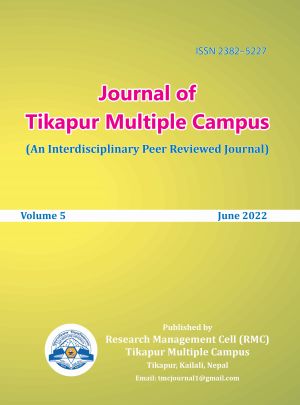Profitability and Resource Use Efficiency of Rice Seed Production in Kailali Nepal
DOI:
https://doi.org/10.3126/jotmc.v5i1.46524Keywords:
Benefit-cost, cobb-douglas, farmers, income, inputAbstract
Rice crop plays a key role to maintain the food security in Nepal. However, inadequate knowledge on the economics of production hampers the level of production. Thus, this study seeks to analyze the profitability, resource use efficiency, and constraints faced in rice seed production in Kailali, Nepal. 158 households were selected using a simple random sampling technique. The primary data were collected from September to November 2021. The descriptive statistics, Benefit-Cost ratio, Cobb-Douglas production function, and scaling techniques were applied for data analysis using SPSS. Further, gross return NRs.115, 772/ha and benefit-cost ratio1.70 indicated that rice seed production was profitable with the productivity of 3.81 mt/ha. Estimation of resource use efficiency showed that the investment in seed and fertilizer needs to be increased by 53% and 63% respectively. The cost of tillage operations, labour, and agrochemicals should be decreased. The scaling technique resulted that pest in storage, inadequate capital and insufficient training were the major constraints. It is concluded that rice seed production is profitable with better yield, but the necessity was observed for the optimal allocation of inputs. The training, better storage facilities and credit access would be helpful to increase the income of farmers.
Downloads
Downloads
Published
How to Cite
Issue
Section
License
Copyright (c) 2022 Jyoti Dhungana

This work is licensed under a Creative Commons Attribution-NonCommercial 4.0 International License.
This license enables reusers to distribute, remix, adapt, and build upon the material in any medium or format, so long as attribution is given to the creator. The license allows for commercial use.




